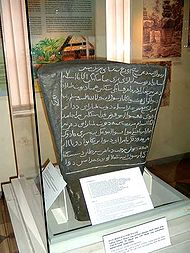
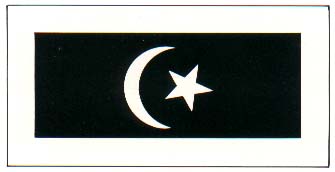
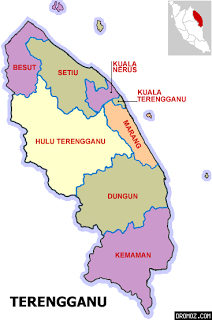
Terengganu's location by the south China Sea is needed strategic. This ensured that it was on trade routes since ancient times. In the early 6th century A.D., Chinese merchants and seafarers were the people who did the earliest written reports on the area that is now Terengganu. Terengganu traded extensively with the Majapahit Empire, the Khmer Empire and especially the Chinese under the influence of Srivijaya. Like other Malay state, Terengganu practised a Hindu-Buddhist culture combined with aminist traditional beliefs for hundreds of years before the arrival of Islam. Terengganu was the first Malay state to receive Islam, as attested to by a stone monument dated 1303 with Arabic inscriptions found in Kuala Berang, the capital of the district of Hulu Terengganu. Terengganu became a vassal state of Melaka, but retained considerable autonomy with the emergence of Riau-Johor.
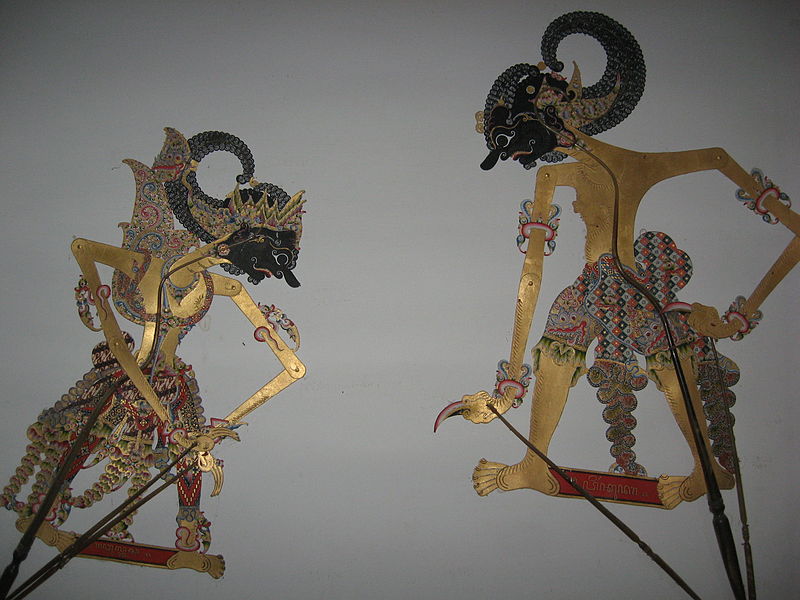
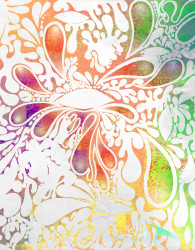
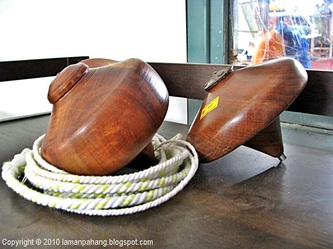
Kite
Partly due to the specific location of facing the South China Sea which brings to this land wind that can make a kite fly as high as one wishes, flying a kite in the dear blue sky of Terengganu was once played by farmers on leveled ground after post-harvesting season, but it now attracts people from all walks of life. Over the years, kite festivals have encouraged creativity in kite-making, thus resulting in kites that are designed in the shape of a fish, cat, caterpillar and bird but the famous huge moon-kite (wau bulan) remains as popular as it was was years ago.
Gasing
Giant top spinning is no child's game! each gasing
or top weighs approximately 5kg and the wooden tops are as big as the
size of a dinner plate. It calls for strength, coordination and skill.
The gasing,
if expertly hurled, can spin for as long as 2 hours. Top spinning
competitions are an annual feature in the east coast of Peninsular
Malaysia especially Kelantan and Terengganu
Wayang Kulit
Wayang kulit is a traditional theater art-form using puppets and shadow-play to tell the epic tales of the ancient classical Hindu legends, Mahabharata and Ramayana.
Batik
This coloured and patterned cloth is now becoming popular in Malaysia and the best Malaysian batiks come from the east coast pf Peninsular Malaysia. There are two types of batik, the hand drawn and the stamped. Recently there are also machine printed batik which design is dearer and colour on one side only
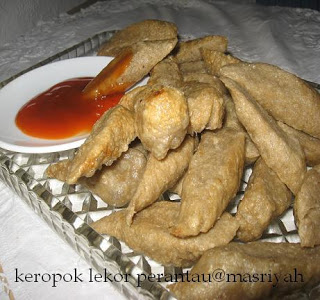
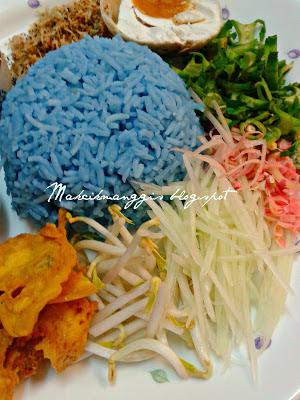
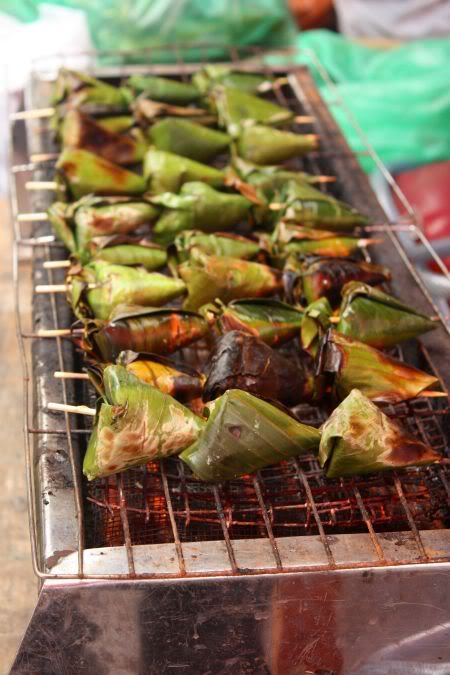
Due to the geographical location and history background, apart from cuisines which representing the three major races, Terengganu food has shown the influence of Thai culture and taste.
KEROPOK
Keropok is cracker made of fish which is ground to a paste then mixed with sago before it is steamed and later deep fried. It is the snack instead of a proper meal and sometimes is served as the snack before meal. It cab be eaten either when it is steamed or deep fried, both give different taste. The long chewy ones are called Keropok lekor while the thin crispy are called Keping, means a slice. Both the keropok is usually eaten with chili dip. Keropok is easily found elsewhere in Kuala Terengganu, from the stalls beside the road to restaurants or market.
NASI KERABU
Nasi Kerabu, a dish of rice tinted bright blue and eaten with ulam, fried salted fish, fish crackers and other garnishings. The blue which comes from the petals of bunga telang (clitoria) used in the cooking variety is the most common, but there are many versions depending on the colour of the rice. Prices are a bit more expensive here but they have good local specialities.
SATAR
Satar is another fish snack in Terengganu Malay cuisine. It is a mixture of pounded fish, shallots and ginger wrapped in banana leaf, pierce of few by 1 single bamboo stick then barbecue over low fire.
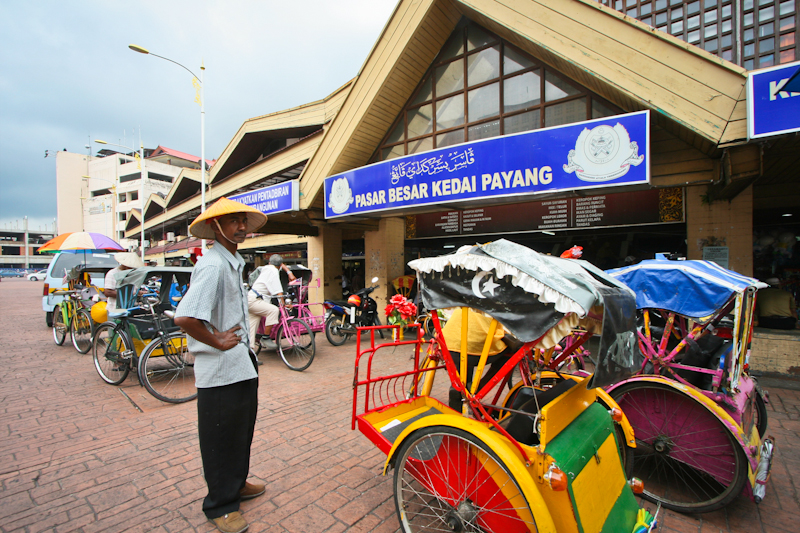
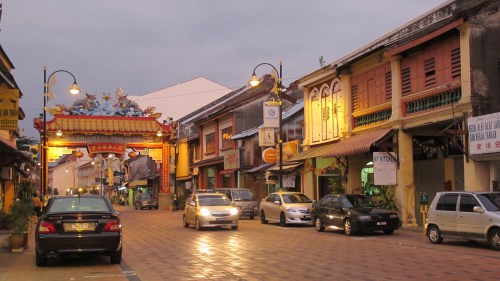
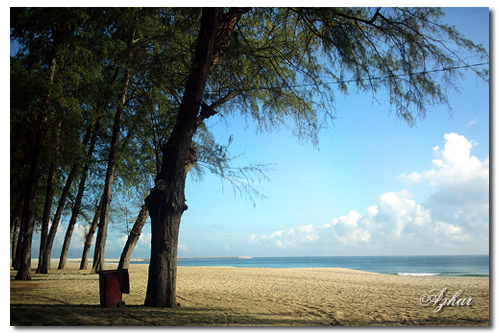
Central Market
Pasar payang or the Central Market is no less than an interesting place to visit. This double storey market houses all kind of goods that you can find, ranging from poultry to sea products, utensils to bed sheet almost like 'you name it, you get it'. The lower level of this double storey building is a wet market.You can find fresh seafood or preserved sea products such as ikan bilis in all sizes, salted fish for stir frying and a salted fish for steaming purposes.
China
Town is actually a row of prewar old building at Jalan Kg. Cina. These
buildings are believed to be the residence for the Chinese from
China mainland who arrived in Peninsular Malaysia in the 19th century.
Most of the houses are 2 stories , with brick or concrete structure and
wooden flooring inthe second storey. Some still keep its wood carving
on the windows and huge heavy wooden front door whereas some were
turned into the renewed modern concrete buildings. The colourful long
roof has created a unique and beautiful photographing spot for photo
taking especially in evening before the sun dissapears from the
sky.These century of building are now sundry shops, local coffee shops,
offices for several tour operators, batik and souvenir shops,
restaurants etc. There is also a Chinese Temple painted in red colour
standing at the corner.
Losong Museum
Another place worth to visit in Kuala Terengganu is the State Museum located in Bukit Losong. Bukit Losong is about 6km from Kuala Terengganu. The museum sprawls over 27 and is said to be the largest in Southeast Asia. This huge museum is gardened by the Terengganu River, therefore it is accessible by road or water and can be seen from the rooftoop of some tall buildings in Kuala Terengganu city. The museum consists of 4 multi storey blocks and houses 10 galleries both indoor and outdoor ranging from some interesting nineteenth century Chinese wares with Islamic ideology, prehistoric tools from the Stone Age, ancient Islamic manuscripts carved on stone ( batu bersurat ) to herbs garden in the outdoor exhibition area.
Pantai Batu Buruk
On the eastern side of Kuala Terengganu is Pantai Batu Buruk. There are pine trees lining up behind the shore, like a loyal friend to the waves. During windy days, playing kite on the beach is a good idea. Apart from being the venue for the annual Beach Festival and food stall, though sand is not as fine as on the islands, Pantai Buruk is also a popular place for strolling and swimming and good place to visit especially in the evening. This beautiful beach is just 1 km from the city centre and can be reached by walking. Perhaps this is the cleanest and widest beach inside Kuala Terengganu city.